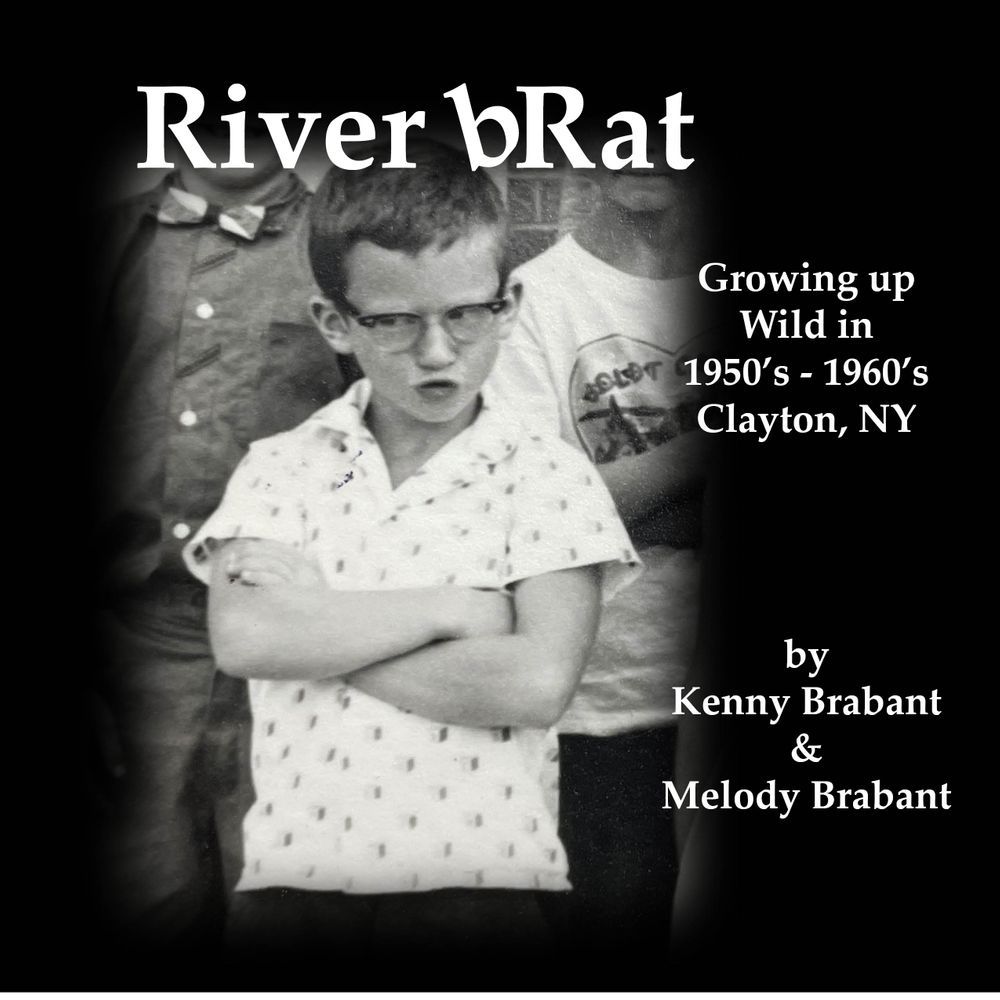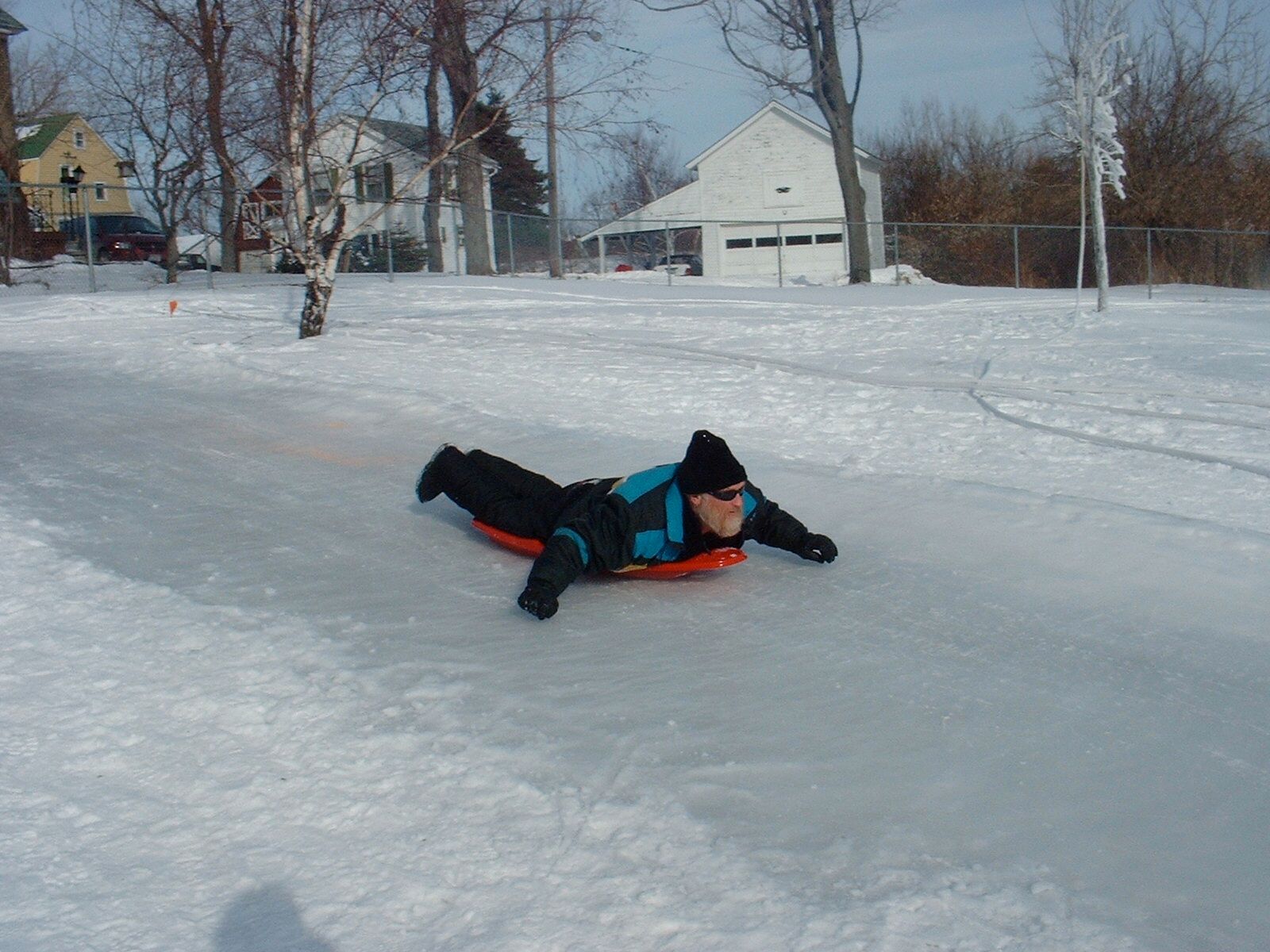Back in 2021 Kenny Brabant and his wife, Melody, published their book River bRat . . . What a popular book, where we could step back in time and realize that those responsible adults of today could easily have been the bRats of those earlier days!
Well, Kenny and Melody are at it again and working on book two – and they sent us a chapter about building the Lion's Field Ice Rink. Sure enough, we at TI Life agreed that it’s too good to wait for the book. Now that it’s almost summer (really!) you can sit back and relive the old days when it was cold all winter! Brrrrrr

When I was very little there was an outdoor skating rink where the municipal building is now. I was too young to skate, but I remember being carried by someone as they skated. And I have a picture of my father and his old-timers hockey team standing on that rink.
Once the municipal building was constructed, the rink was moved to Webb Street, across from the Lion’s Field, and this is where I skated all through my childhood. Skating was overseen by village employees; I remember Pepper Flake and Jim Flanders as two of them.
On snowy nights, there was a 3-person metal snow shovel (it was actually three metal snow shovels welded together), and another shovel that was custom made at Frink’s Snow Plow, shaped specially for use at the rink. At the end of a night of skating, we kids would be told to grab the shovels and clean the rink, and if the weather allowed, the workers would then put down a new coat of ice and it would be all ready for the next day.


There was a small warming hut with benches for taking skates on and off and for warm-up breaks. It had a wood stove early on, which was eventually changed to an oil burner stove. To this day, I still can vividly remember the smell of burning mittens and hats left too close to the heater in that hut. The warming hut was a great place to learn and practice colorful metaphors, too, when the door was carelessly left open for too long, on a bitter cold night!
On the ice, we liked to make big chains of skaters and form a human whip, sending the last kid in the chain flying. We generally had just one January thaw, not like today’s roller coaster of warm and cold weather all winter long. This rink closed when the new arena opened, in the early to mid-1970’s. The framework and boards for it were then used in Cape Vincent, for their rink.
We live just up the hill from where the old rink had been, and I would look across the road at Lion’s Field, all snow covered, with the gate closed and padlocked, and at the hydrant at the far end, and often declare to Mel and others that I was going to sneak over there in the dead of night, open that hydrant and flood the field so that we could have some good old-fashioned outdoor skating again.
After many years, I decided I wanted to do more than threaten, so I went to a board meeting and proposed doing just that. I heard a lot of reasons why I couldn’t, but eventually got approval. As of this winter of ‘22/23, I’ve now built an outdoor oval on the Lion’s field each winter for 20 years, and added an ice sled hill, too. The ice certainly isn’t as easily created, controlled or maintained as an indoor rink, but there really is no comparison between indoor skating and out – day or night. I now have that Frink’s metal snow shovel, too, for cleaning up the outdoor community rink; it’s mysteriously much smaller than it used to be.
I made a lot of mistakes when I got started building ice. The first winter we had a good snow base, but I thought I needed to clean it off, so I cleared all the snow off an oval that goes around the perimeter of the football field, and started building ice on the grass. This was the exact opposite of what I should have done – icing on a good base of packed-down white snow would have allowed freezing more quickly, avoided the water being absorbed into the ground, and that white base would reflect rather than absorb sunlight.
The village had five 50 foot lengths of one inch diameter quick-release fire hose that they gave me to use. In my first tries, I hooked all five hoses together, then opened the hydrant and waited for the water to come out the end. I discovered the water was freezing before it could get through all five lengths. So I dragged all 5 hoses over to my house and into the cellar to heat up and thaw out by the wood stove, then went back out to try again.

After much trial and error, I discovered that by starting with just one hose at a time and letting the water come through just that first 50 feet, the hose and water temperature would equalize as I iced that first stretch, and it wouldn’t freeze up. I could then crimp that one and stand on it while I hooked up the 2nd hose, and bring that hose up to temperature while I iced the next 50 feet of field, and repeat the process until I had all five hoses on and reached the other end of the field. I also discovered that I had to keep moving quickly, spraying a thin layer back and forth in front of me and constantly moving the spray, to avoid the warmer (46 degree F) hydrant water hitting one spot and melting a hole in the thin layer of ice I had already achieved.
I’d pull 250 feet of water-filled hose up one length of the football field, then doubled back to the hydrant (going across the center of the field wasn’t an option because it was covered in deep snow and impossible to drag the hoses through) and back up the other side, to ice that side of the oval, making my way back again to the hydrant. My first layer was down! Now it was time to repeat the process many times each night for multiple nights, until a solid, smooth, and skateable base was achieved.

If I wanted to stop for any reason, I had to kink the hose to stop the water flow, or get it off the rink, otherwise it would melt a big hole in the ice. On very cold nights, the hose would freeze down on the ice as I worked, so in addition to just dragging 250 feet of water-filled hose, I’d be yanking it free every time I moved, too. One layer would take three hours or more to get down.
That first year, it took me five all-night sessions in below-zero weather to get down 20 layers of ice before it was skate-able. And there were a lot of hard lessons learned in the process. The temperature needed to be below 19 degrees and preferably below zero to make good ice.

My coldest night, over the years, was 27 below zero. Whenever I see record cold temps listed on the weather for these past years, I know I was out there icing. I remember on that 27 below night, those hoses were really freezing down, and I had forgotten my ice cleats. So, I’d spray a little water where I wanted to step, then put my foot down and wait 20 seconds until my boot froze down; I’d be well-anchored and able to yank those hoses free. I made my way around the ice that way all night, and it worked out just fine.
On another super cold night, I went out to get started and found the hydrant itself was frozen. I tried putting a pipe extension on the hydrant wrench, as a lever, but that wouldn’t break it free. Then I brought over a flame- thrower propane torch and thawed it that way. It was not ideal, as I burned all the paint off a freshly painted hydrant – but it worked, and I got busy making ice.
I’ve detailed how much work and determination it took to get this going, but I also need to share just how beautiful these nights were. Crisp and cold, but clear and beautiful and peaceful as well. I love being over there under the stars or a brilliant moon.
[All photographs provided by the authors]
By Melody and Kenny Brabant
Melody Brabant enjoys gardening, reading and volunteering in the community. In the winter you will find her helping husband, Kenny Brabant, as he builds and maintains the Lion’s Field Skating Oval and Sled Hill. The couple sponsors the Clayton sunflower contest each summer, and a snowman contest in the winter months - all with a goal of encouraging community spirit and outdoor fun for kids of all ages.
Melody and Kenny Brabant are working on their sequel and it promises to reveal more about Growing Up Wild in Clayton! When they let us know the approximate publication date, we'll let you know!
Posted in: Volume 18, Issue 4, April 2023, History, Sports
Please click here if you are unable to post your comment.
